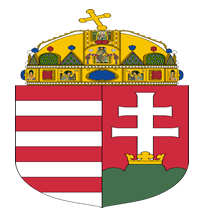Hungary: Government
Key Figures
- Chief of State:
- President Tamas Sulyok
- Head of Government:
- Prime Minister Viktor Orbán
Overview
- Government Name:
- Hungary
- Constitution:
- Adopted: 2012; Is the first constitution adopted within a democratic framework and following free elections and succeeded the 1949 constitution.
- Government Type:
- Parliamentary Republic

Index of Economic Freedom
Country Risk Rating
Government Branches
| Main Powers | Election Process | Election Cycle 1 | |
|---|---|---|---|
| Executive | The president is largely a ceremonial role and serves as the commander-in-chief. The prime minister selects cabinet ministers and has the right to dismiss them. |
The president is elected by the national assembly and must have two-thirds of the legislative votes in the first two rounds or a simple majority in the third round. The prime minister is elected by the national assembly on recommendation of the president. |
President: 5 years; Prime Minister: 4 years |
| Judicial | The constitutional court has the power to challenge legislation on the grounds of unconstitutionality. The high court of justice is the highest court of the land and has jurisdiction over all Hungarian courts. |
The constitutional court judges are elected by two-thirds vote of the national assembly. The Supreme Court judges are appointed by the president upon the recommendation of the national council of justice. |
Constitutional court: 12 years; High court of justice: life appointment. Mandatory retirement at age 62 |
| Legislative | Initiates and approves legislation sponsored by the prime minister. |
176 members are elected in single-member constituencies, 152 members are elected through a party-list proportional representation system, and 58 members are allocated from a national compensatory list. |
4 years |
Regional Trade Blocs
International Organization Participation [2]
Environmental Agreements [3]
Tax Information [2]
- Tax Authority:
- Ministry for National Economy & National Tax and Customs Authority
- Tax Name:
- VAT
Sources:
- ElectionGuide http://www.electionguide.org/
- EY, http://www.ey.com
- CIA World Factbook, https://www.cia.gov/the-world-factbook/
- U.S. Bilateral Relations Fact Sheets http://www.state.gov/r/pa/ei/bgn/


